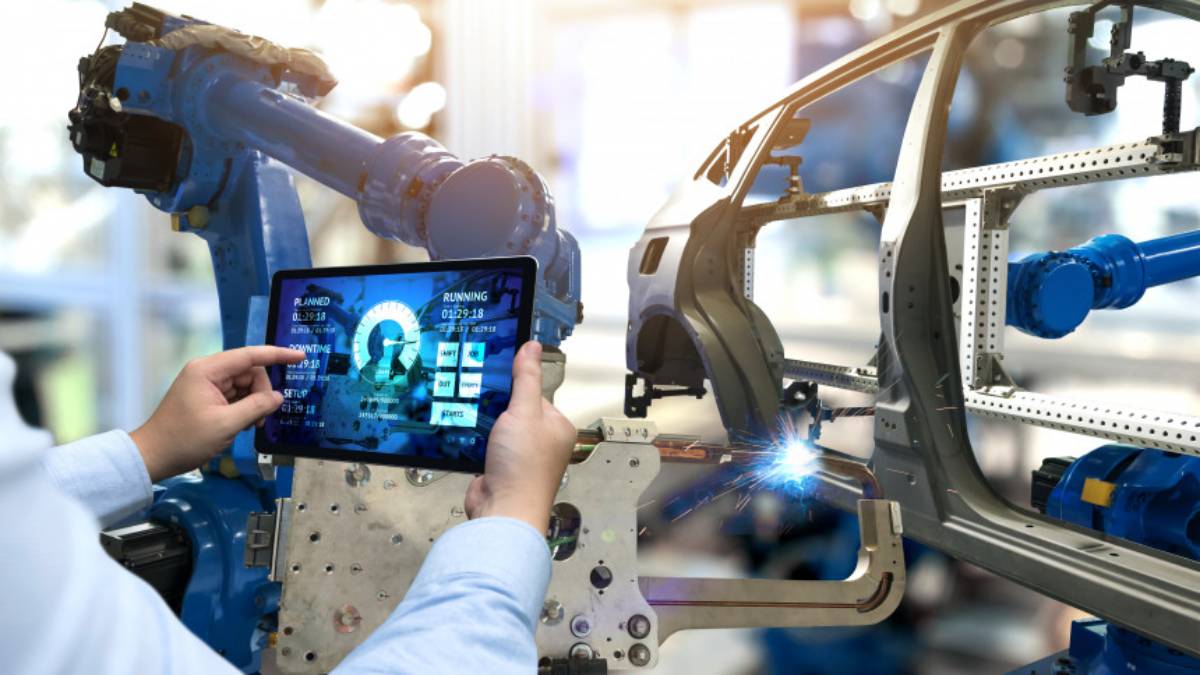
The Impact of AI on Vehicle Design and Manufacturing
In the changing world of cars, artificial intelligence (AI) is a game changer. It is changing how we design and make vehicles. Manufacturers aim to meet rising demands for efficiency, sustainability, and innovation. AI is changing the game in automotive design and manufacturing. This blog explores how AI affects vehicle design and manufacturing. It looks at the benefits, challenges, and future possibilities for the automotive industry.
The importance of AI in this sector cannot be overstated. The automotive industry must reduce emissions, improve safety, and enhance user experience. AI can help meet these goals more effectively. AI is changing how vehicles go from idea to production. It helps improve design processes and automates manufacturing tasks. Many people misunderstand AI’s role in this change. They often think it replaces human creativity instead of supporting it.
Key Benefits / Why It Matters
AI in Automotive Design
AI in automotive design is revolutionising the way vehicles are conceptualised and developed. Vehicle design has traditionally been hard work. It needs a lot of human input and repeated testing. However, AI-powered tools are now enabling designers to create more efficient and innovative designs in a fraction of the time.
One of the primary benefits of AI in automotive design is its ability to process vast amounts of data quickly and accurately. By analysing data from:
- Previous designs
- Market trends
- Consumer preferences
AI can generate design options that align with current demands and anticipate future needs. This data-driven approach not only speeds up the design process but also enhances the quality and relevance of the final product.
AI algorithms can simulate different design scenarios. This helps designers explore options without needing physical prototypes. This capability cuts costs and speeds up development. It helps manufacturers launch new models faster.
AI Car Manufacturing
AI is changing car manufacturing in important ways. Manufacturing used to depend a lot on human labor. This caused inefficiencies and inconsistencies. AI-driven automation is changing the factory floor. It boosts productivity and improves quality control.
Key advantages of AI in car manufacturing include:
- Optimised production lines: AI systems monitor machinery in real-time, predicting maintenance needs and preventing costly breakdowns.
- Predictive maintenance: Ensures smooth production, reduces downtime and increases output.
- Improved worker safety: AI-powered robots take on repetitive and dangerous tasks, allowing humans to focus on creative, high-value work.
This shift not only improves safety but also enhances overall efficiency and product consistency.
Artificial Intelligence in Vehicles
AI in vehicles is changing how we drive. It goes beyond just design and manufacturing. AI boosts safety, convenience, and connectivity on the road. It does this through autonomous driving features and advanced driver-assistance systems (ADAS).
AI-driven systems can:
- Process data from various sensors and cameras
- Detect obstacles and recognise traffic signs
- Make real-time driving decisions
This automation is leading to fully autonomous vehicles. These vehicles can change transportation by lowering accidents and traffic jams.
Additionally, AI enhances in-car infotainment systems by providing:
- Voice recognition
- Natural language processing
- Personalised virtual assistants
These technologies help users connect with their vehicles. This makes driving smoother and more enjoyable.

Additional Expert Tips & Common Mistakes to Avoid
Best Practices in AI-Driven Design and Manufacturing
To get the most from AI in car design and manufacturing, follow best practices. These should match industry standards and regulations. Key considerations include:
- Data security and privacy: AI systems rely heavily on data; therefore, manufacturers must ensure that sensitive information is protected from cyber threats.
- Human-AI collaboration: Fosters cooperation between AI systems and human workers. While AI handles repetitive tasks, humans contribute critical thinking and creativity.
- Continuous Training: Regularly update AI algorithms with new data to ensure improved performance over time.
Common Mistakes and Misconceptions
Some of the most common pitfalls when implementing AI include:
- Underestimating data quality: AI systems are only as reliable as the data they are trained on. Poor data quality leads to inaccurate results.
- Viewing AI as a human replacement: AI should not be seen as a substitute for human workers but rather as a complement that enhances human capabilities.
- Ignoring change management: Transitioning to AI-driven processes requires cultural and operational adjustments within an organisation. Neglecting this can hinder adoption.
Advanced Insights / Expert Recommendations
The Future of AI in Automotive Design and Manufacturing

Looking ahead, the future of AI in automotive design and manufacturing is promising, with several emerging trends:
- Integration with IoT and blockchain: Combining AI with these technologies will create more connected, secure, and transparent production environments.
- Sustainable manufacturing: AI can help reduce waste, optimise energy use, and create eco-friendly materials, supporting global sustainability goals.
- Smart cities and intelligent transportation: AI will enable vehicles to communicate with each other and infrastructure, improving traffic flow and reducing urban congestion.
These trends show a move toward a smarter and greener car industry.
Conclusion: Driving the Future with AI
In conclusion, AI greatly impacts vehicle design and manufacturing. It offers many benefits that are changing the automotive industry. AI is changing everything. It streamlines design processes, boosts manufacturing efficiency, and transforms the driving experience. This leads to a new era of innovation and sustainability.
To stay competitive, automotive manufacturers must:
- Embrace AI technology
- Integrate AI into operational workflows
- Follow best practices and avoid common pitfalls
- Invest in research and collaborative development
Moving forward, industry stakeholders must collaborate, share knowledge, and invest in AI research and development. This way, we can tap into the endless possibilities of AI. This will help create a brighter and more sustainable future for the automotive industry and beyond.
What are your thoughts on the role of AI in automotive design and manufacturing? How do you see this technology shaping the future of the industry? Share your insights and join the conversation.